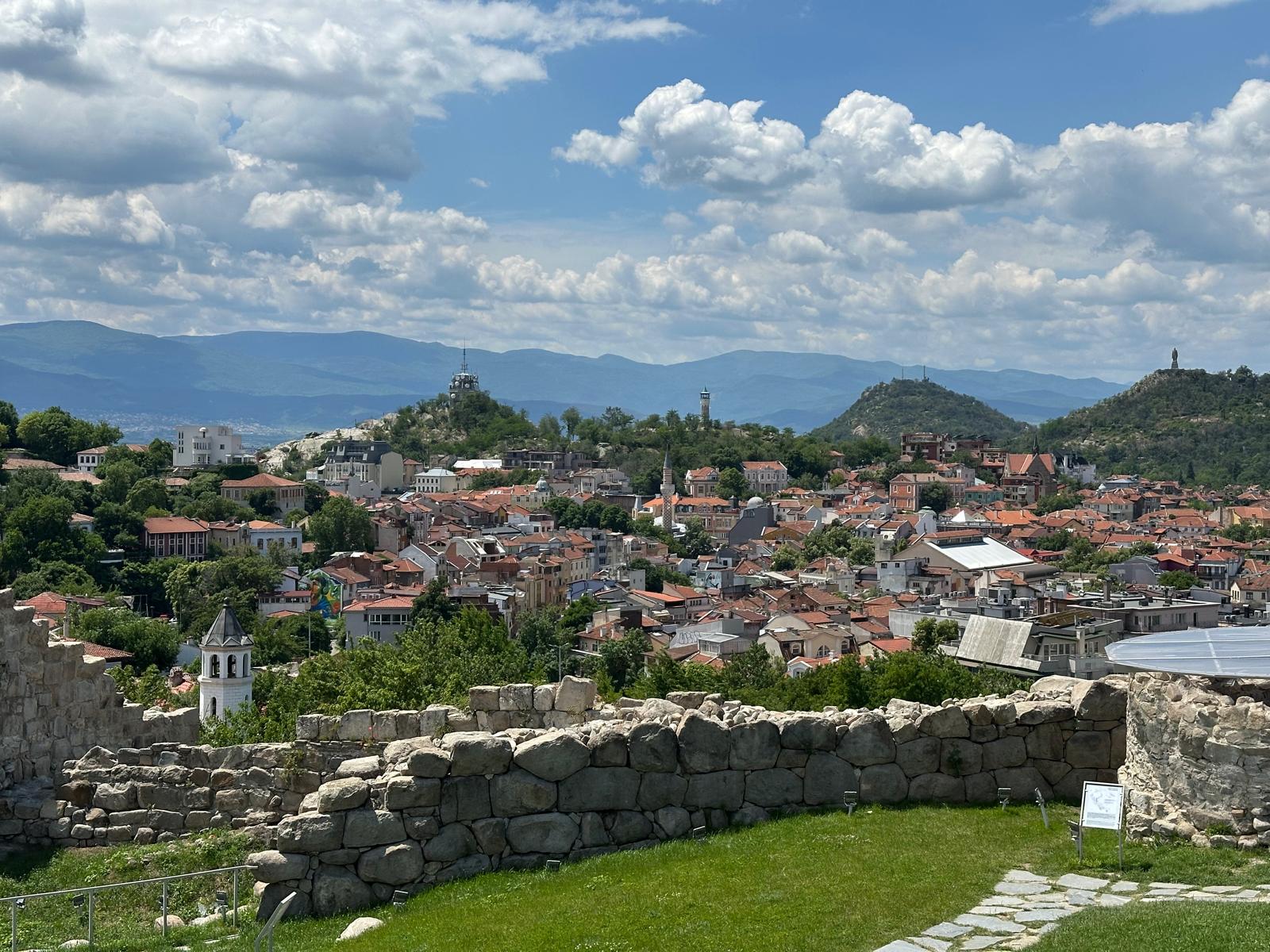This view opens like a storybook—one whose pages are filled with millennia of civilization. From the summit of what remains of an ancient fortress, weathered stone walls embrace a broad sweep of terracotta roofs and winding streets, the city of Plovdiv sprawling below like a living mosaic. In the foreground, large limestone blocks form a rugged perimeter, relics from a Roman past that has somehow managed to stay rooted, even as new layers of time accumulate around it. A narrow stone path leads inward, suggesting centuries of footsteps have passed through here—soldiers, merchants, poets, tourists.
Framed by this arc of ruin, the city stretches out in hues of warm clay, creamy white, and leafy green. Red-tiled roofs dominate, interrupted occasionally by spires—one particularly striking minaret stands tall and slender near the center of the scene, subtly reminding visitors that this city has been shaped not only by European empires but also by Ottoman influence. A white bell tower with a black spire peeks out from the lower left quadrant, nestled between trees and tucked neatly into the urban sprawl like a well-kept secret.

Beyond the clustered rooftops and narrow alleys, Plovdiv’s iconic hills rise gently, green with foliage and crowned by monuments. One hill hosts a squat structure resembling a radio or TV tower, likely Sahat Tepe (Clock Hill), another bears a tall column, and the most commanding holds the proud silhouette of the Alyosha Monument—a Soviet-era statue of a soldier that looks out defiantly over the city. Each hill has its own character and story, their summits acting as historical bookmarks in a city that’s considered the oldest continually inhabited settlement in Europe.
The sky is a gallery of its own: a bright canvas brushed with cumulus clouds drifting like thoughts across the horizon. In the distance, the Rhodope Mountains melt into soft blues and purples, their folds overlapping like waves, forming a natural boundary that both frames and shelters the city below.
Plovdiv is a city of encounters—of Thracian, Roman, Byzantine, Ottoman, and Bulgarian cultures colliding, layering, and settling into something uniquely its own. To stand here is to feel the weight of those encounters in the stone beneath your feet, the churches and mosques side by side, the urban rhythm pulsing around ruins older than entire nations. It is a destination for travelers who appreciate not just architecture, but atmosphere; not just landmarks, but legacies.
Wander through its Old Town, sip coffee in Kapana’s art district, or simply pause atop these ancient walls and look out across the rooftops, knowing
Leave a Reply